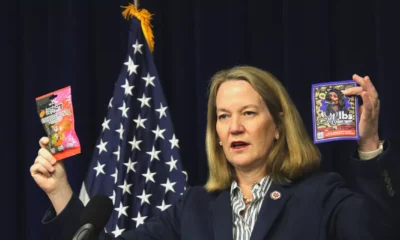Ag-to-Urban
Hobbs Unveils ‘Ag-to-Urban’ Bill, Revolutionizing Water Management in Arizona

A new law aimed at conserving groundwater in Arizona was signed by Governor Katie Hobbs on June 30, 2023. This legislation allows farmers to sell their land along with groundwater rights to developers, potentially revitalizing homebuilding in the Phoenix and Pinal County regions.
Governor Hobbs expressed that the law will not only preserve the state’s scarce groundwater but also facilitate economic growth and lower home prices. This significant decision follows a moratorium on new certificates for 100-year assured water supplies imposed over the Pinal and Phoenix active management areas in 2023.
The moratorium arose from analyses by the Arizona Department of Water Resources, which highlighted the inadequacy of groundwater to support further housing developments. While the new law focuses initially on Phoenix and Pinal County, expansion to the Tucson area could occur if a similar moratorium is enacted there.
Many builders, particularly in the outer reaches of Maricopa and Pinal counties, have increasingly depended on groundwater due to diminishing Colorado River resources. The moratorium has significantly halted development in suburban areas such as Buckeye and Queen Creek.
Gov. Hobbs praised the bipartisan support for the legislation. She emphasized the collaborative effort among state lawmakers to tackle vital concerns for Arizonans. “Arizona has long led the country in water management, and today we have shown that we will continue this legacy,” Hobbs noted.
Despite the overall support, some legislators raised concerns. Critics argued that the law did not leverage builders’ pressure to enact stricter groundwater regulations in areas not currently managed actively. Hobbs countered by reaffirming her commitment to preventing over-pumping in rural counties.
The Senate passed the bill with a 26-4 vote, while the House approved it with a narrower margin of 35-20. Lawmakers reached a compromise after Hobbs vetoed a similar proposal last year over water-saving concerns.
Senator T.J. Shope hailed the new law as a product of extensive negotiations among various stakeholders. He noted that it would enable retiring farmers to sell their land and reduce overall water consumption.
The legislation specifies pumping limits from former farmland to 1.5 acre-feet annually in Phoenix and 1 acre-foot in Pinal County. Current usage in these areas is approximately three times these amounts, posing challenges for builders as they adopt higher-density developments to meet housing needs.
Concerns remain about the implications for developers on the fringes of metropolitan Phoenix, as the law restricts water rights to lands within a mile of retired farmland. Critics warn that many targeted areas lack nearby agricultural land.
Opposition came from some lawmakers, including Rep. Chris Mathis, who expressed doubts about a new groundwater replenishment mandate that the law may trigger. Without sufficient river water supplies for replenishment, the Central Arizona Groundwater Replenishment District faces challenges, complicating the proposed Ag-to-Urban program.
In contrast, Senate minority leader Priya Sundareshan endorsed the new law, citing essential safeguards that ensure groundwater conservation over the long term. She highlighted community agreements aimed at enhancing the state’s groundwater management.
Experts note the necessity of assessing whether this law will successfully transform agricultural land into development opportunities. Sarah Porter, director of the Kyl Center for Water Policy, indicated significant available farmland to convert but cautioned that strict proximity rules may hinder comprehensive development.

















